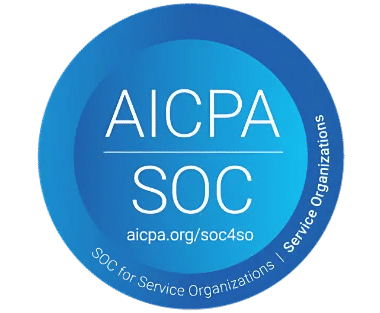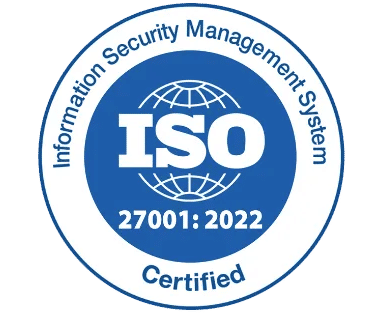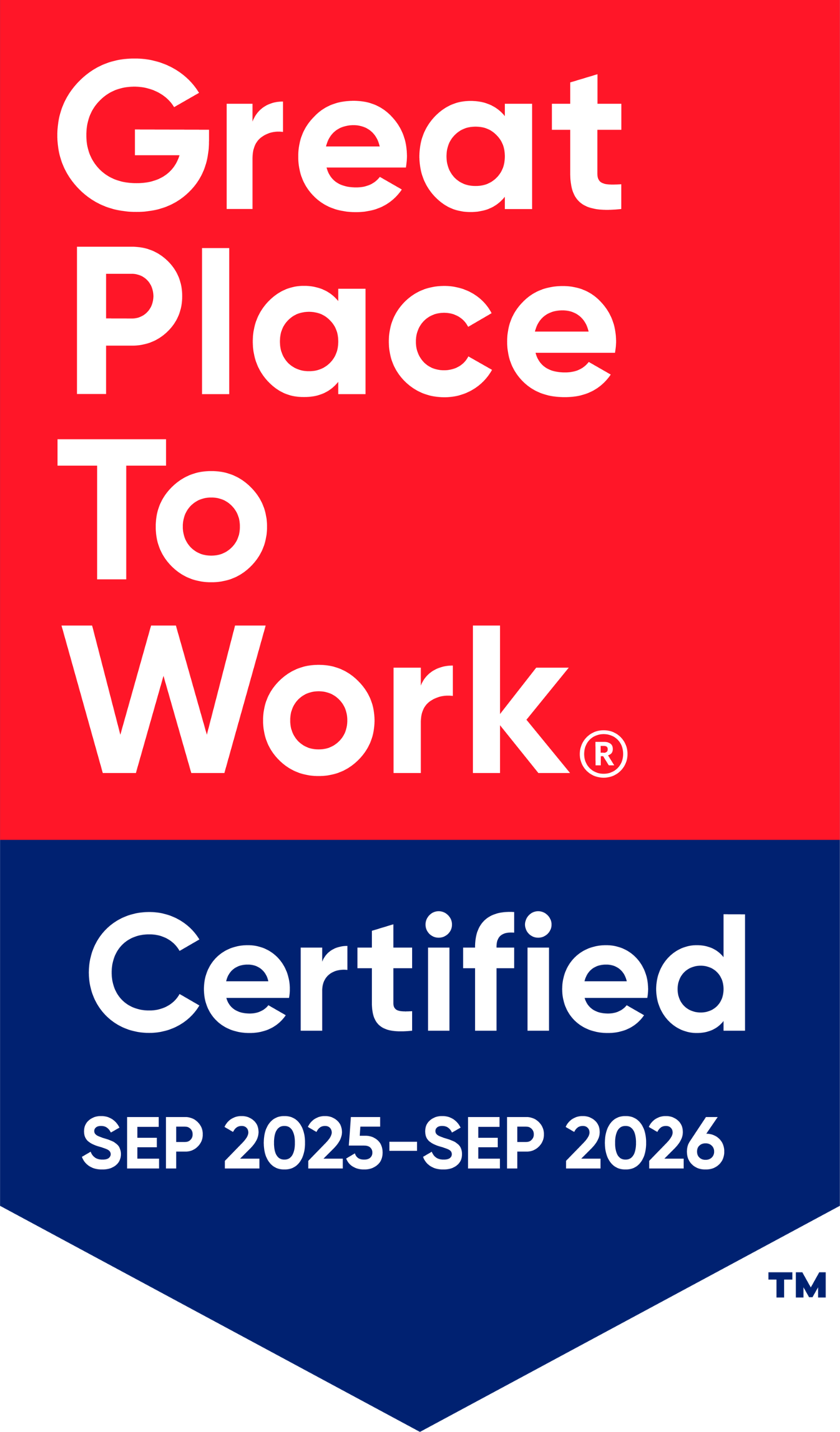Best Onboarding Software for Small Business in 2025

Onboarding software for small business is key because starting a new job can feel exciting but also a little scary. For small businesses, how you welcome new employees matters a lot. If you get onboarding right, you make a great first impression that keeps people around longer and helps them do their best work.
Companies with good onboarding keep 82% more new hires and help them become productive way faster. But if you are like many small businesses, onboarding can get messy lost paperwork, slow replies, and confused new employees.
Today, onboarding goes far beyond paperwork it is about creating a welcoming experience that gets new hires ready to contribute from day one.It is about making new hires feel welcome and ready to jump in from day one. And using the right onboarding software can make this easy no headaches, no chaos, just smooth sailing.
Why Employee Onboarding Software Matters for Small Business
Small businesses often face tight budgets and limited HR resources. Handling onboarding manually wastes time and risks losing talent early on. Employee onboarding software automates tasks, making the process efficient and professional.
Here’s why it matters:
- Boosts New Hire Engagement: When new employees feel welcomed and supported from day one, nearly 7 out of 10 are more likely to stay with a company for three years or more. Engaged employees start with a sense of belonging and purpose, which fuels their motivation.
- Saves Time and Money: Automating forms, training schedules, and communications cuts onboarding time by 50%. This lets HR teams ditch the paperwork hassle and focus on what really matters helping employees succeed and feel valued.
Cuts Down Turnover: When onboarding is done right, companies keep more of their people boosting employee retention by over 80%. Keeping good employees longer reduces costly hiring cycles and preserves team knowledge.
Improves Compliance: Keeps you updated on legal and tax documents without headaches. Automation helps ensure that required paperwork is complete and up to date, avoiding fines or audits.
- Enhances Consistency: Every new hire receives the same quality onboarding experience, no matter who handles it. This consistency builds trust and helps align employees quickly with company values and goals.
By streamlining these critical processes, small businesses can focus more on building strong relationships with their new employees rather than getting bogged down in paperwork.
Small businesses that invest in onboarding software grow faster by turning new hires into productive, happy team members right away.
The 7 Best Onboarding Software for Small Business
Effective employee onboarding survey is crucial for organizational success, influencing retention, productivity, and engagement.
Here are some key statistics highlighting the importance of a well-structured onboarding process:
Choosing the right software can feel overwhelming. Here are seven top onboarding platforms trusted by small businesses for their ease of use, features, and affordability:
- Employee Onboarding 365 — Built with small and mid-sized businesses in mind, this platform makes onboarding effortless by smoothly connecting with Microsoft 365 tools your team already knows and uses. It features customizable workflows, document management, compliance tracking, and automated task assignments, helping new hires get up to speed quickly and securely.
- BambooHR — Loved for its easy-to-use design and seamless connections with popular HR tools that make life simpler for everyone involved. It offers easy-to-use onboarding checklists, automated reminders, and centralized employee data, making it great for growing small teams that want simplicity without sacrificing power.
- Zapier — Connects your onboarding software with hundreds of apps to automate workflows. Zapier makes it easy to link tools like email, payroll, and project management, helping small businesses save time and reduce manual tasks.
- WorkBright — Focused on mobile-first onboarding, excellent for remote and deskless workers. It allows new hires to complete paperwork and training from their phones before day one, speeding up the process and improving employee experience.
- Zoho — Offers comprehensive onboarding with customizable workflows and seamless integration across its HR suite. Zoho helps small businesses automate onboarding tasks, improve team collaboration, and track employee progress efficiently.
- Rippling — Combines onboarding with IT management and payroll, making employee setup seamless across departments. Rippling automates account creation for software, manages device assignments, and handles payroll, so IT, HR, and finance stay aligned.
- HR Cloud — Offers personalized onboarding experiences with powerful engagement and analytics tools to keep new hires connected and informed. Its platform includes social feeds, task management, and employee surveys to foster culture and reduce early turnover.
Each of these software options helps small businesses transform new hire experiences and streamline HR workflows without breaking the bank. Choosing the right one can give your team the perfect start and set the tone for long-term success.
Common Challenges Small Businesses Face Without Onboarding Software
- Disorganized Paperwork: Manual onboarding processes often lead to lost, missing, or incomplete forms. This not only delays new hires starting their work but also creates unnecessary frustration for HR teams scrambling to track down documents.
- Slow Communication: Without a centralized system, new employees may wait days or even weeks for important information, approvals, or answers to their questions. This communication gap can leave them feeling ignored or uncertain about their role.
- Inconsistent Training: Without a clear and structured onboarding plan, training becomes patchy and uneven. New hires might miss critical information or receive conflicting instructions, which affects their confidence and performance.
- Lack of Employee Engagement: When onboarding is informal or chaotic, new hires often feel disconnected or undervalued. When new hires feel disconnected early on, it can hurt team spirit and increase the chances they will look for work elsewhere.
- Compliance Risks: Forgetting to collect or update mandatory legal, tax, or certification documents exposes small businesses to costly fines, audits, and legal challenges.
- Time-Consuming Manual Tasks: HR staff spending hours chasing signatures, scheduling meetings, or manually entering data takes away time from strategic initiatives that could benefit the company more.
- Limited Visibility into Onboarding Progress: Without software tracking, it is hard to know which new hires have completed their paperwork or training, leading to gaps in readiness and productivity.
- Difficulty Scaling: As the business grows, manual onboarding becomes unsustainable, resulting in delays and inconsistent experiences that can hurt your reputation as an employer.
These challenges cost small businesses thousands in lost productivity, increased turnover, and missed growth opportunities. Employee onboarding software solves these problems by automating and streamlining the entire process making it efficient, consistent, and easy to manage.
Essential Features for Great Employee Onboarding Software
When choosing onboarding software, focus on tools that truly meet the specific needs of your small business. Here’s what to keep an eye on:
- Automated Workflows
Efficient onboarding requires many steps from completing forms to training and approvals. Automated workflows streamline these processes by guiding new hires through each step, sending automatic reminders, and escalating tasks when needed. This reduces human error and ensures no important step is missed. - Document Management
Managing piles of contracts, tax forms, and company policies can get messy fast. Good onboarding software securely stores all essential documents in one place and enables e-signatures, which speeds up form completion and reduces paper clutter. It also helps keep sensitive data safe with encryption and access controls.
- Training Modules
Consistency is key in training new employees. Look for software that includes customizable training modules such as online courses, videos, quizzes, or checklists. This ensures every new hire receives the same core information and can learn at their own pace while managers track progress easily. - Task Management
Onboarding involves multiple parties HR, managers, IT, and the new hire. Task management features allow assignments and deadlines to be set, tracked, and updated in real-time. This keeps everyone accountable, avoids delays, and provides transparency throughout the onboarding journey. - Communication Tools
Centralized messaging within the onboarding platform keeps communication clear and accessible. It allows new hires to ask questions, get feedback, and receive updates without losing track in long email threads. Some tools even support chat, video calls, or social feeds to foster early connection.
- Mobile Accessibility
Today’s workforce is often remote or hybrid, so onboarding software must work flawlessly on mobile devices. This flexibility lets new employees complete paperwork, training, or check-ins from anywhere, making the process more convenient and improving completion rates. - Compliance Tracking
Staying on top of legal and regulatory requirements is critical. Effective onboarding software automatically updates you on changing compliance rules and audits the completion of mandatory documents and trainings. This lowers your risk and makes audits a lot less stressful to handle. - Integration with Other Systems
The best onboarding software connects seamlessly with your existing payroll, HRIS, benefits platforms, and communication tools. This integration reduces duplicate data entry, keeps employee information synchronized, and creates a smooth flow across your HR ecosystem. - Analytics and Reporting
Insight is power. Look for software that offers dashboards and reports on onboarding progress, completion rates, and employee feedback. These insights help you identify bottlenecks, improve processes, and measure the impact of your onboarding efforts on retention and productivity. - Personalization Options
Every small business is unique, and so should be your onboarding experience. Software that allows you to customize workflows, training content, and communications to fit different roles or departments creates a more relevant and engaging experience for new hires.
With these features in your onboarding toolkit, your small business can deliver a smooth, professional, and welcoming experience that sets new employees up for success from day one.
Benefits of Using Employee Best Onboarding Software for Small Business
- Enhances Employee Experience: A structured onboarding process creates a warm, friendly welcome that introduces new hires to your company culture, values, and expectations. When new hires know they are truly appreciated and supported right from the start, they’re more likely to stay motivated and happy at work.
- Speeds Up Productivity: Guided onboarding helps new employees get up to speed faster by providing clear instructions, training, and resources. According to LinkedIn Learning, companies that excel at onboarding achieve 54% greater new hire productivity, which means your business can hit goals quicker and operate more efficiently.
- Increases Retention Rates: First impressions matter. Good onboarding experiences encourage employees to stay longer, reducing turnover and the high costs associated with recruiting and training replacements. Studies show that strong onboarding can improve employee retention by up to 82%.
- Simplifies HR Work: Onboarding software automates repetitive and time-consuming tasks such as paperwork, reminders, and training assignments. This frees HR professionals to focus on strategic initiatives like employee development and culture building.
- Improves Team Collaboration: Effective onboarding connects new hires with their managers and teammates early on. Communication tools, team introductions, and collaborative platforms foster a sense of belonging and help build strong working relationships faster.
- Ensures Compliance and Reduces Risk: Automated compliance tracking helps small businesses stay up to date with legal, tax, and industry-specific regulations. This reduces the risk of costly fines and legal issues that can arise from missing or incomplete documentation.
- Offers Scalable Solutions: As your business grows, onboarding software scales with you. Whether you hire five new employees or fifty, the software handles the volume efficiently, ensuring every new hire gets a consistent and quality onboarding experience.
- Provides Valuable Analytics: Having clear reports and easy-to-understand analytics means you’re not just guessing how your onboarding is going you actually see what’s working and what’s slowing things down. This real insight lets you tweak the process on the fly, make smarter HR choices, and put your time and energy where it truly matters.
- Supports Remote and Hybrid Workforces: Many onboarding solutions are designed for mobile and remote access, making it easy to onboard employees regardless of their location. Being flexible like this is key nowadays, especially as more teams work from all over the place.
By investing in employee onboarding software, small businesses not only streamline their processes but also create a positive and productive workplace that attracts and retains top talent driving growth and success over the long term.
How Small Businesses Can Use Employee Onboarding Software to Win
Step 1: Customize Your Onboarding Journey
Do not settle for a one-size-fits-all approach. Tailor onboarding tasks, training modules, and content to fit each role or department. Use your software’s features to create personalized experiences that make new hires feel valued and understood right away.
Step 2: Automate Paperwork and Compliance
No more drowning in paperwork or running after signatures everything gets done quickly and smoothly. Use e-signatures and secure digital document storage to complete forms quickly and keep everything organized. Automated compliance checks help you stay up to date with legal and tax requirements without the headache.
Step 3: Engage New Hires Early
Start building relationships before day one. Send welcome emails, introduce new hires to their team members, and share training schedules ahead of time. This early engagement creates excitement and makes employees feel part of the team from the start.
Step 4: Provide Training and Resources
Offer easy-to-follow training videos, checklists, and FAQs that new employees can access anytime. Track their progress in real-time and provide timely feedback to keep them on track and motivated.
Step 5: Assign Clear Roles and Responsibilities
Ensure every stakeholder knows their part in onboarding from HR and managers to IT support. Use task management features to assign responsibilities, deadlines, and reminders so nothing slips through the cracks.
Step 6: Foster Two-Way Communication
Create channels within the software where new hires can ask questions, share feedback, and feel heard. Open communication helps address concerns early and builds trust.
Step 7: Celebrate Milestones and Achievements
Use your onboarding platform to recognize when new hires complete training, reach their first 30, 60, or 90 days, or achieve key milestones. Celebrations boost morale and reinforce commitment.
Step 8: Monitor and Improve Continuously
Leverage analytics and reporting tools to track onboarding effectiveness. Identify bottlenecks, areas where new hires struggle, and opportunities to enhance the experience. Use these insights to refine your process regularly.
Why Your Small Business Needs the Best Employee Onboarding Software Today
Don’t let a weak onboarding process cost you valuable employees and drain your budget. The first few days and weeks on the job are critical they shape how new hires see your company and decide whether to stay or move on. The right onboarding software helps you:
- Welcome New Team Members Professionally and Warmly: A well-designed onboarding experience sends a clear message that you value your employees and care about their success. With thoughtful welcome messages and instant access to what they need, new hires feel ready and cared for right from their very first day.
- Ensure Every Task Is Done on Time, Without Manual Follow-Ups: Onboarding involves many moving parts paperwork, training, equipment setup, and more. Automated workflows keep everything on track, so nothing falls through the cracks, saving time and preventing costly delays.
- Keep Legal and Tax Documents Organized and Audit-Ready: Compliance is non-negotiable. The software securely stores all necessary documents, tracks completion, and updates you on changing regulations. This reduces risks of fines or legal headaches that small businesses cannot afford.
- Boost Employee Confidence, Loyalty, and Output from Day One: When employees know what to expect and have clear guidance, they perform better and feel more connected to the company. This early engagement translates into higher retention and stronger team culture.
- Save Your HR Team from Overload: By automating repetitive onboarding tasks, HR professionals can focus on what really matters building relationships, fostering development, and driving strategic growth.
- Scale Your Business Smoothly: As your company grows, onboarding complexity increases. The right software grows with you, maintaining consistency and quality regardless of how many new hires you bring on board.
- Shine Bright in a Crowded Job Market: Today’s best talent wants more than just a paycheck they want to feel valued and inspired. A smooth, welcoming onboarding process can be a key differentiator that attracts motivated employees eager to contribute.
In today’s fast-paced and competitive environment, excellent onboarding is not a luxury it is a necessity. Investing in the best employee onboarding software sets your small business apart, creating a foundation for long-term success, happier employees, and a thriving workplace.
How to Choose the Right Employee Onboarding Software
Choosing the right employee onboarding software is not just about ticking boxes; it’s about finding a solution that genuinely fits your small business’s unique needs and growth plans. Here are real, hands on tips to help you make that smart choice:
1. Understand Your Onboarding Needs First
Before you even look at software options, map out your current onboarding process:
- What are the biggest pain points? (Paperwork delays, lack of communication, training gaps?)
- How many employees do you onboard monthly or yearly?
- Do you have remote, or hybrid hires who need mobile-friendly onboarding?
- What legal compliance requirements do you face (like tax forms or industry-specific regulations)?
Getting clear on these questions will save you from paying for features you don’t need or missing critical functionality.
2. Prioritize User Experience for Everyone
Onboarding software needs to be easy to use for everyone whether you are in HR or just starting your new job.
Can your HR team set up and manage workflows without complex training?
- Is the interface simple and welcoming for new employees who may not be tech-savvy?
- Check demo videos or trial versions to see how easy it is to navigate.
If the software is hard to use, it leads to headaches, delays the whole onboarding process, and eats up valuable time. Choose software that feels natural and smooth to use from day one.
3. Look for Customization and Flexibility
Every business has its own style and requirements:
- Can you tailor the onboarding steps to match the needs of different teams or job roles?
Are you able to add your company branding, documents, and training materials easily?
- Is it possible to adjust the process as your business grows or changes?
Software that locks you into rigid steps or generic templates will limit your ability to deliver a personalized onboarding experience.
4. Check Integration with Your Existing Tools
Onboarding does not happen in isolation. It touches payroll, HR systems, communication platforms, and sometimes even performance management tools:
- Does the best onboarding software for small business easily connect with the payroll and HR tools you’re already using?
Can it connect to communication tools like email, or Microsoft Teams?
- Integration avoids double data entry, reduces errors, and keeps all your systems aligned.
If your software plays well with your existing tech stack, your onboarding process becomes seamless and less time-consuming.
5. Evaluate Compliance Features Thoroughly
Legal compliance is a major risk area for small businesses:
- Does the software automatically update tax forms, legal documents, and policy acknowledgments?
- Are e-signature and document storage secure and audit-ready?
- Can you track completion of compliance tasks with clear reporting?
Good onboarding software acts like your compliance watchdog, reducing risks and paperwork headaches.
6. Assess Reporting and Analytics
Insight matters:
Does the software show clear reports on tasks completed, training progress, and any hold-ups?
Can you use this information to make your onboarding process better over time?
Look for easy-to-understand dashboards that highlight key points and suggest next steps.
Good reports help you see what’s going well and what needs fixing, so you can keep improving how new employees get started.
7. Consider Support and Training Resources
Even the best software needs good backup:
- What kind of customer support is offered? Is it 24/7 or limited business hours?
- Are there training materials, onboarding guides, or dedicated account managers to help you?
- Quick, knowledgeable support saves time and frustration during setup and daily use.
Don’t underestimate how important good support is, especially if your HR team is small or stretched thin.
8. Test Mobile Accessibility
The workforce is increasingly remote and on-the-go:
- Does the onboarding software have a mobile app or at least a responsive design for smartphones and tablets?
- Can new hires complete paperwork, training, and communication easily from their phones?
- Mobile-friendly software means faster completion and happier, more engaged employees.
9. Analyse Pricing vs. Value
Budget matters but do not just chase the cheapest option:
- What’s included in the price unlimited users, support, updates?
- Are there hidden fees for add-ons or integrations?
- Balance cost with the features and benefits that matter most to your business.
Sometimes paying a little more upfront saves you thousands in wasted time, turnover, and compliance penalties.
10. Read Reviews and Request References
Finally, do your homework:
- Look for honest customer reviews from companies similar to yours.
- Ask vendors for references so you can speak directly with other small business users.
- This real-world feedback helps you avoid surprises and confirms the software delivers on promises.
Conclusion
Employee onboarding software is not just a tool it’s your first step toward building a motivated, productive team. For small businesses, investing in smart onboarding technology means saving time, cutting costs, and increasing employee happiness.
See how our onboarding software can transform your hiring process. Book a free demo to experience seamless onboarding designed for small businesses.
Frequently Asked Questions
How much does onboarding software cost for small businesses?
The price of onboarding software changes based on what tools you need and how big your team is. Many providers offer affordable plans starting under $50 per month, which often include essential tools like digital forms and task tracking. More advanced packages with additional features such as custom branding, integrations, and analytics may cost more. It is important to compare pricing carefully and consider the value each plan provides to your specific business needs.
Can onboarding software integrate with payroll systems?
Yes, many leading onboarding software solutions integrate seamlessly with popular payroll and human resources platforms. This integration ensures that employee information flows smoothly from onboarding into payroll without the need for manual data entry, reducing errors and saving time. When choosing software, verify which payroll systems are supported and how easy the integration process is.
Is onboarding software secure?
Keeping your employee data safe is a must. Trusted onboarding software uses strong encryption to protect information whether it’s being sent or stored.They also comply with relevant privacy laws and industry standards to ensure your business meets legal requirements. Always check for certifications and security features like two-factor authentication, secure cloud storage, and regular security audits when selecting software.
Can I customize onboarding workflows?
Absolutely. Customization is essential for aligning onboarding software with your unique business processes. Most platforms allow you to tailor workflows by role, department, or location, ensuring new hires receive the specific information and training they need. Customizable templates, checklists, and automated notifications help create a smooth and personalized onboarding experience for every employee.
How long does it take to implement onboarding software?
Implementation time varies based on the complexity of your onboarding process and the size of your organization. For small businesses with straightforward needs, setup can often be completed within one to two weeks. More complex workflows or integrations with other systems may take up to four weeks or longer. Good software providers offer onboarding support and training to help you get up and running quickly.









_svxLrd-8yH.png)

_2VYSFUTN5m.png)

_JiluXJRGNl.svg)

_2djTKNocf.png)





_Rapo0hRMBy.png)

















